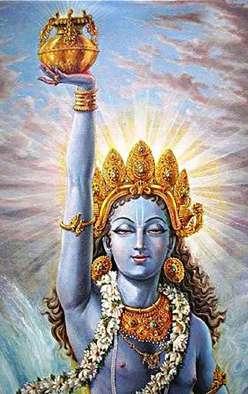
2 minute read
Health & Spirituality
from Volume - 15
Health S& & pirituality
Dr. Dhanvantari Jha
Advertisement
The Process of Breathing & Prana Vayu
Respiration is an important physiological process which is necessary for the existence of life. In Ayurveda, the process of
respiration in human body is a function of Prana Vayu (which is one of the five sub-types of Vata Dosha). The channels (Srotas) through which Pranavayu flows are collectively known as Pranavaha Srotas(This includes the complete respiratory system including Lungs). The Ancient Ayurveda Gurus described the process of Respiration in accordance with the Doshas of the body and explained the most important role of Vata dosha especially the Prana Vayu in the process. The facts described by ayurvedic scholars in ancient texts of Ayurved, depict a clear resemblance with the features mentioned in the process of respiration in modern medical studies.

Prana Vayu is primarily located in the head or brain. It is bound to control the functions of the brain or nerves, or it could be put in other way and said that the brain and nerve functions can be compared to those of Prana Vayu. Vagbhata in Ashtanga Hridaya also tells that Prana Vayu commands Buddhi (intellect), Hridaya (mind, in this context), Indriya (sense organs and their functions) and Chitta (brain). This shows that the higher functions including perception of sense objects, the motor signals in response to the sensory signals, the thought processes, the intelligence and application of intelligence so as to lead the day to day activities, integration of mind and sense organs, and all mind functions are manipulated, controlled and governed by Prana Vata.
Prana Vayu carries out smooth breathing functions and movements. Prana Vayu on circulating in the chest makes breathing process easy by creating space for inspiration and expiration by creating movement of organs of breathing and movements of main and accessory muscles of respiration. Prana Vayu thus creates expansion and contraction of chest cavity so as to enable free breathing and good aeration in the body. Mainly it helps in breathing in (inhalation) of air or oxygen.
When the Prana Vayu gets vitiated it causes diseases like Hikka (hiccups), Shwasa (dyspnoea, breathlessness, asthma, and bronchitis), Pratishyaya (cold, congestion), Swarabheda (hoarseness of voice), Kasa (cough) etc. By this it is clear that the pathological manifestations and the territory afflicted by the vitiated Prana Vayu is predominantly the respiratory system.
And thus, for proper breathing the balance
| 13 | sahajANAND






